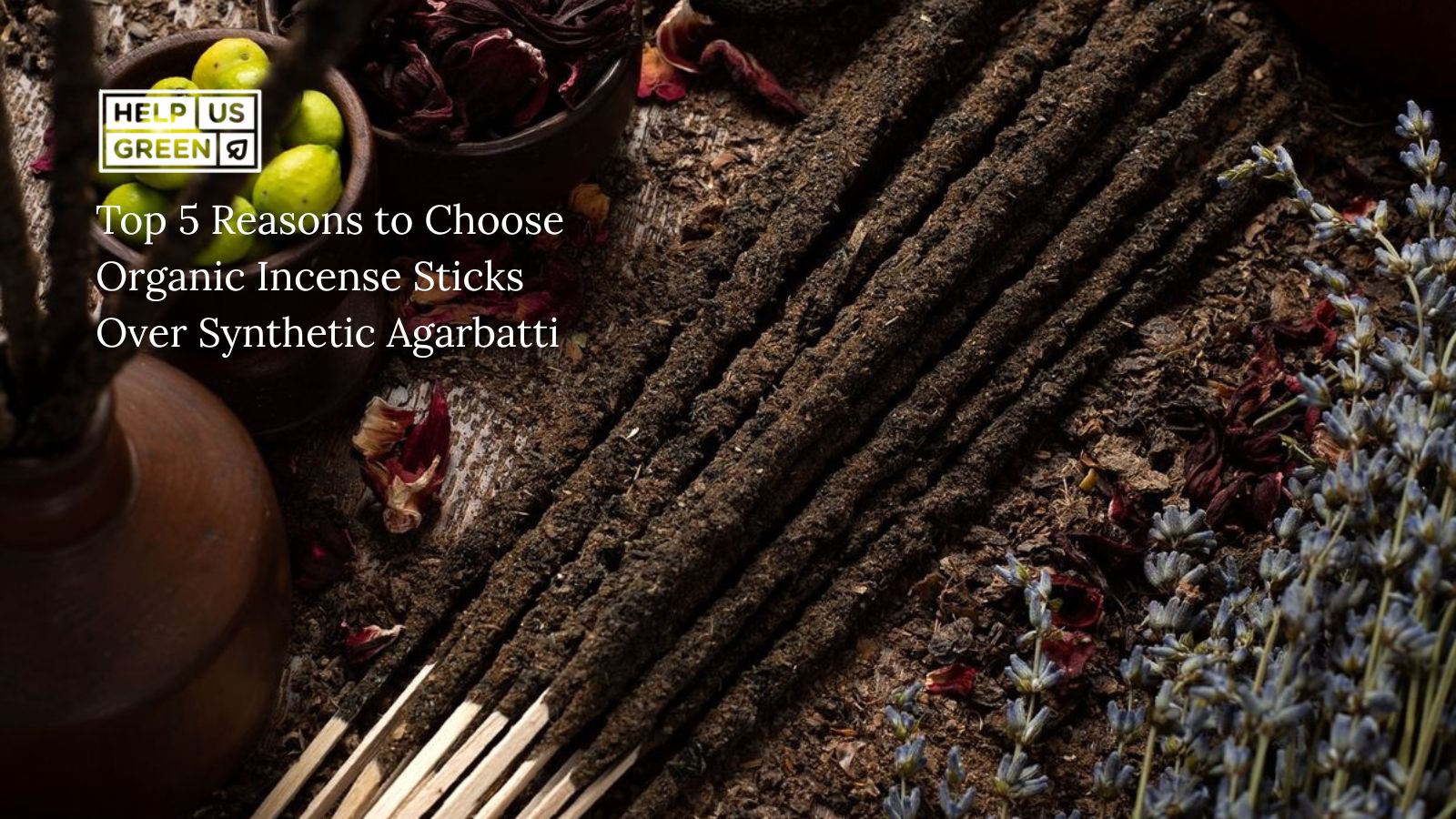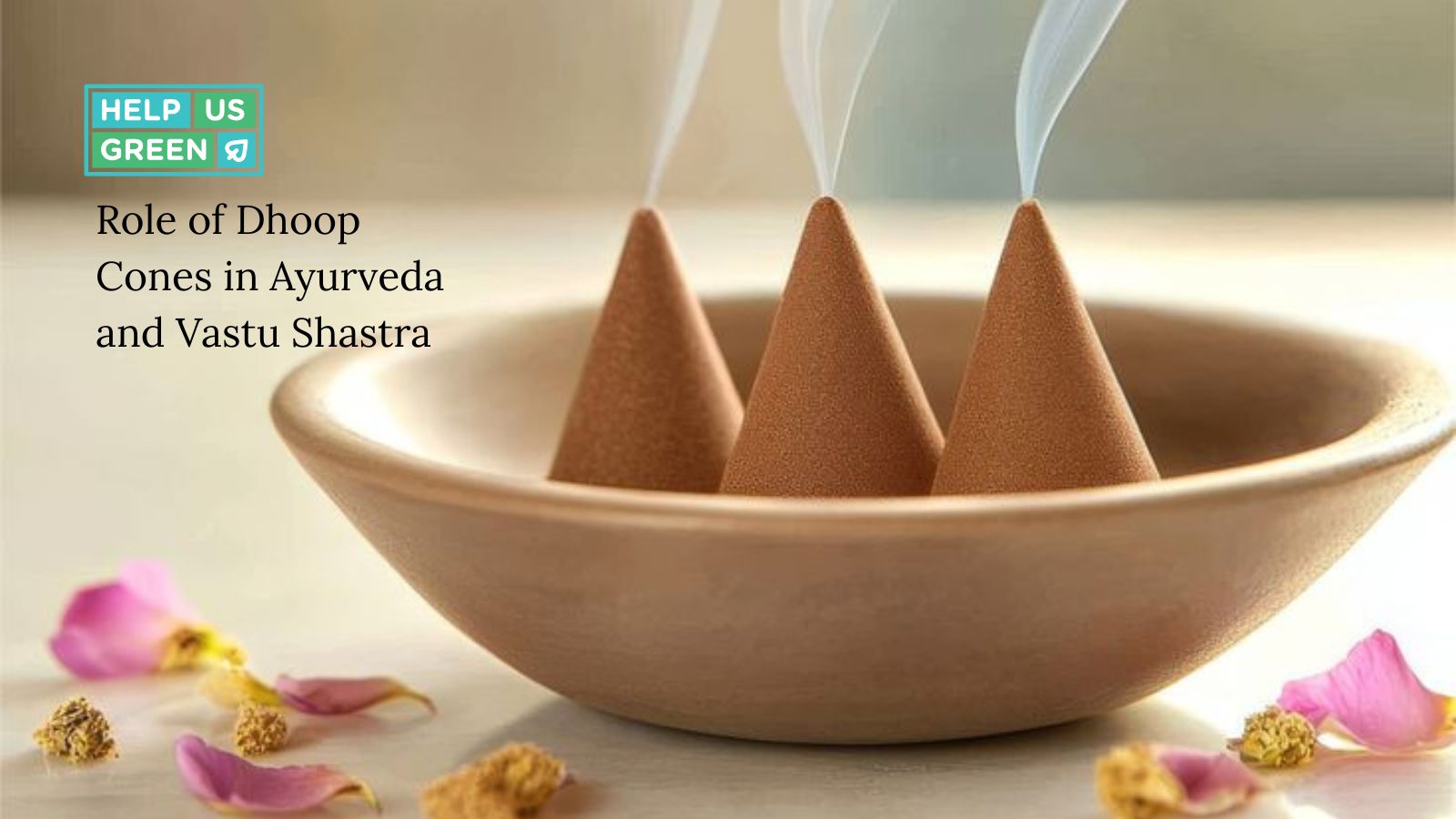From ancient temples to modern homes, dhoop cones have been a fragrant part of Indian rituals and wellness practices. But there's more than just a scent.
Let's explore how these cones play a powerful role in both Ayurveda and Vastu Shastra, bringing balance to body, mind, and space.
What Are Dhoop Cones and Why Do We Use Them?
Small cone-shaped incense created from natural herbs, resins, and essential oils known as dhoop cones Unlike traditional incense sticks, dhoop cones don’t have a bamboo stick inside, therefore provide a more intense and pure smell.
In Indian households, fragrance is linked to purity and positivity. Beyond their pleasant aroma, dhoop cones help in -
-
Purify the air
-
Remove bad odours
-
Create a peaceful atmosphere for prayer or yoga
-
Boost mood and reduce stress
Role of Dhoop Cones in Ayurveda - More Than Just Fragrance
For thousands of years, dhoop cones have been a mainstay in Indian custom; they serve a more profound purpose in Ayurveda (India's traditional medical system), than just a lovely scent.
Natural resins and herbs were burned in havens and rituals in Vedic times to clear both the surroundings and the mind. This ritual was known as Dhoopan. The smoke from holy herbs was thought to both please the gods and ward against ailments and negative energies.
Ayurvedic literature like Charaka Samhita and Sushruta Samhita note herbal smoking's uses to:
-
Disinfect homes and clinics
-
Manage respiratory problems
-
Calm the nervous system
Dhoop Cones and the Science Behind Their Healing Powers
Many of the herbs used in dhoop cones - like neem, guggul, and camphor, release natural antimicrobial chemicals when burned. These maintain cleaner air and destroy airborne germs.
Sandalwood, rose, and frankincense are among perfumes that stimulate the limbic system in the brain, the part that regulates emotions. This lessens exhaustion, anxiety, and stress.
Ayurveda claims that particular dhoop aromas such as Tulsi or lavender dhoop cone from our HelpUsGreen, help cool the body and improve mental clarity and restorative sleep.
Thus, lighting a dhoop cone is an ancient health rite, not only does your home smell wonderful but helps calming your nervous system. It's an easy means to incorporate Ayurveda, purity, and calm into your everyday existence.
The best aspect is that these cones are made from natural, temple-sourced blossoms by our brand HelpUsGreen, making them safe, sustainable, and ideal for daily usage.
How Dhoop Cones Cleanse Your Space According to Vastu Shastra
In Vastu Shastra, the traditional Indian study of energy flow, your house is a place where energy either moves freely or gets stopped rather than just walls and windows. Maintaining that good flow is one simple yet efficient strategy.
According to Vastu, some parts of your house, particularly entryways, corners, and puja rooms may gather stagnant or negative energy over time. Lighting dhoop cones in these locations helps to energise the area and get rid of these powerful forces.
The smoke from dhoop cones, is said to
-
Neutralise negative vibes
-
Attract positive vibrations
-
Balance the five elements (earth, water, fire, air, space)
This makes your home more aligned with nature’s harmony.
Vastu recommends placing fragrance sources in the northeast or east of the house. Lighting a dhoop cone here during sunrise or early morning helps in cleansing yesterday’s energies and inviting a fresh start.
Why Dhoop Cones Are a Must-Have in Every Indian Home
100% Herbal Goodness
Our cones are Made with pure ingredients like sandalwood, neem, tulsi, and essential oils, these dhoop cones refers to a clean, natural burn and a delicate scent that calms the soul.
Eco-Friendly & Socially Conscious
Constructed from recycled temple flowers, these cones promote flowercycling, a sustainable technique that both keeps rivers clean and empowers rural women craftship.
Purifies Air & Promotes Well-being
When burned, the natural herbs in these cones release antimicrobial substances. Thus, you are not only making your house smell wonderful; you are genuinely helping clean the air and promote mental quiet.
Perfect for Rituals & Daily Calm
Perfect for pooja, meditation, or merely calming down, these cones burn for 30 to 45 minutes. So choose a fragrance that fits your mood and environment from eucalyptus, citronella, rose, and lemongrass from our HelpUsGreen’s natural dhoop cones.
Final Thoughts
Dhoop cones are an integral component of our cultural heritage, Ayurvedic knowledge, and Vastu customs rather than just fragrant implements. From clearing the air to balancing energies and relaxing the mind, they harmonize both the home and the heart.
Make room for HelpUsGreen dhoop cones whether you want a calm ambience, your daily pooja, or meditation corner. A little cone, a tremendous energy change.
FAQs:
1. What are dhoop cones made of?
Natural herbs, resins, essential oils, and components including sandalwood, neem, tulsi, and camphor are used to create dhoop cones. Eco-friendly and chemical-free, brands such HelpUsGreen create them from recycled temple blossoms.
2. How are dhoop cones different from incense sticks?
Unlike incense sticks, dhoop cones don’t have a bamboo stick inside. This gives a stronger, more natural aroma and makes them ideal for pooja, meditation, and Vastu rituals.
3. Can dhoop cones help with stress and sleep?
Lavender, tulsi, and sandalwood are among the smells that are known to relax the mind, lower stress, and boost sleep quality. For mental and emotional balance, Ayurveda favors employing these.
4. What’s the connection between dhoop cones and Vastu Shastra?
Vastu says that dhoop cones helps to purify air and cleanse negative energy in nooks, doorways, or pooja rooms. The smoke draws good vibrations into the house and helps to balance the five elements.
5. Are HelpUsGreen dhoop cones safe to use every day?
HelpUsGreen's dhoop cones are safe for daily usage. Moreover, they are made in an environmentally friendly manner, therefore they are beneficial for both your health and for the earth.
6. When is the best time to light a dhoop cone?
You can light them during early mornings, before pooja, or in the evening. Many people also burn them before important events or during housewarming rituals for good luck and freshness.





